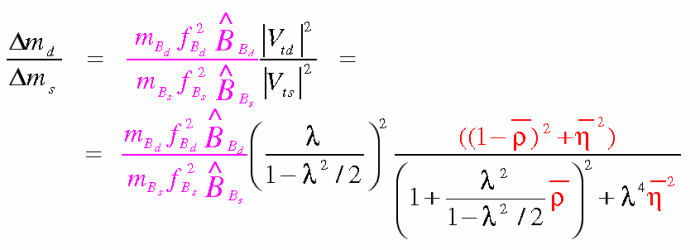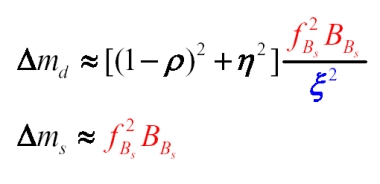
The Bs0-
Bs0
oscillation frequency, which is related to the mass difference between the
light and the heavy mass eigenstates of the system is proportional, in the Standard
Model, to |Vts|2. Neglecting terms, having small
contribution, |Vts|2 is independent of
ρ and
η.
Instead, the ratio Δmd/Δms is proportional to
ρ and
η and the advantage of
using this ratio instead of only Δms is that the ratio
ξ= fBd√BBd/
fBs√BBs
is expected to be better determined from the theory than the individual quantities entering into
its expression. The measurement of Δmd/Δms gives a
similar constraint as Δmd :

In practice a problem arise in the (possible) use of the information from Δmd twice : in the Δmd constraint itself and in the ratio Δmd/Δms. The correlation has to be taken into account. It should be remembered that Δms alone would give a constraint on |Vts|2 and so fBs√BBs. It should be also considered that due to the error coming from chiral extrapolations the quantities which are best known and which are effectively calculated are fBs√BBs and ξ while fBd√BBd is derived from the other two. For this reason we propose to write the constraints in the following way :

Here the quantities entering in the expression of Δmd are the calculated ones : fBs√BBs and ξ. To renders the constraint on Δmd more effective both quantities have to be improved. The constraint on Δms helps in improving the knowledge of one of those : fBs√BBs.
We implemented this bound using directly the information from the experimental likelihood provided by CDF.
|
|